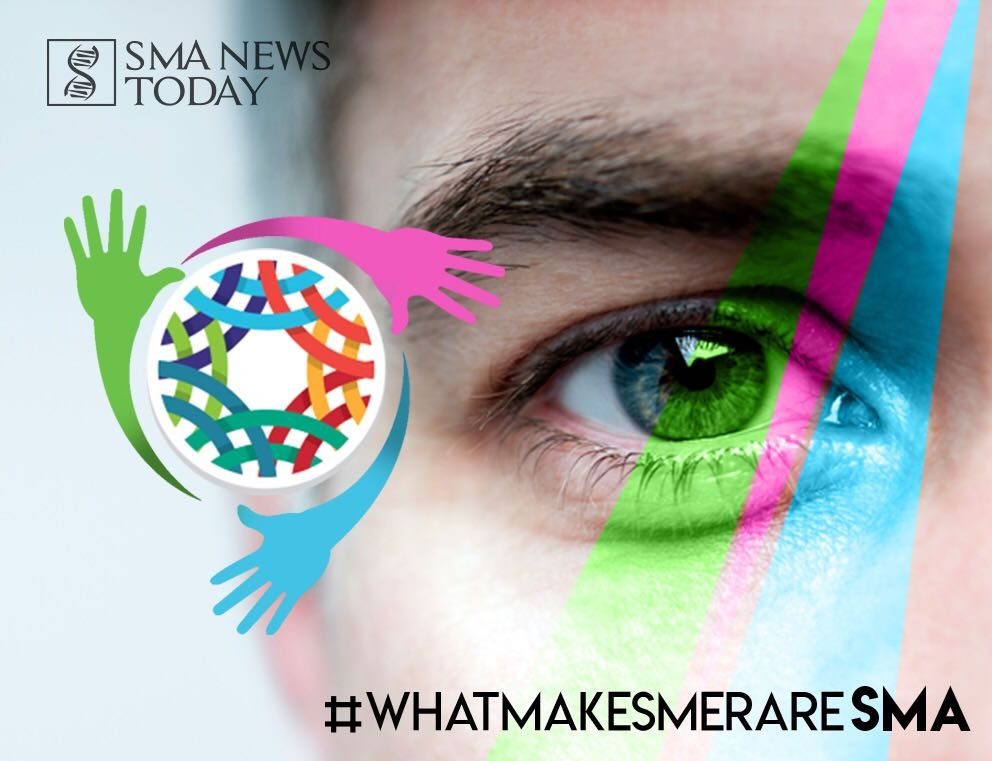On This and Every Other Day, I Am Proud to Be Rare

The first Rare Disease Day was celebrated in Europe in 2008. The United States participated the following year, and by 2019 more than 100 countries had joined in to highlight rare diseases. The special acknowledgment falls annually on the last day of February. This year, that’s the 29th — rare in itself.
Bionews Services, the parent company of SMA News Today, certainly does its part to spread awareness of rare diseases. The 65 rare disease communities represented in this phenomenal organization include Alport syndrome, Batten disease, epidermolysis bullosa, Lambert-Eaton myasthenic syndrome, Gaucher disease, sarcoidosis, scleroderma, and of course, spinal muscular atrophy (SMA), among many others.
The potential for expansion of the list is mind-boggling. While I’m optimistic that it will one day include my granddaughter’s Beckwith-Wiedemann syndrome, my present focus is on SMA.
In honor of Rare Disease Day, columnists publishing during the last few days of February were asked to write about what it means to be rare and to include the appropriate hashtag — something I’ve never used before.
Who says you can’t teach an old dog ...
***
My husband, Randy, and I were in our mid-40s when we learned we were going to have another baby. In 1997, that was pretty rare. Blindsided, we didn’t faint at the news. That, too, should qualify as rare.
When Jeffrey was born, Randy and I performed as if we’d never skipped a beat in the new parent department. We survived sleepless nights in addition to Randy’s new business and helping our other children, Matthew and Katie, with homework, projects, and extracurricular activities. Like all parents, we just did it. There was no time to pat ourselves on the back.
And then SMA entered the picture.
When Jeffrey was 2 months old, we were stunned by the pediatric neurologist’s explanation that SMA was rare and progressive and that there was no treatment. We were further numbed to learn that Jeffrey’s severe case likely would take his life by age 4.
Twelve hours later, any remnants of sanity disintegrated when the genetic counselor explained that most babies and children with type 1 don’t see their second birthday.
Our reaction to having our props knocked to Kalamazoo was not rare. I remember trying to think of relatively intelligent questions — did my age have anything to do with it? — most likely to keep myself from being sucked into the proverbial black hole. Somehow, Randy remained upright. I don’t remember what he said, if anything. With noodles for legs, we left the neurologist’s office for Jeffrey’s hospital room.
And I sobbed until I ran out of tears.
***
SMA was considered rare in 1997 and still is today, despite it being the leading genetic cause of death of children under 2. With the availability of encouraging treatments — Spinraza (nusinersen), Zolgensma (onasemnogene abeparvovec-xioi), and the investigational Risdiplam (formerly RG7916) — coupled with the increasing number of states including SMA in prenatal testing, this insidious disease hopefully will relinquish its title one day as a leading killer of beautiful, bright babies and children.
What a rare opportunity it is to witness a viable treatment protocol in our lifetime. Although this miracle comes too late for too many families, I believe our angels are cheering along with the rest of us.
***
Speaking of rare opportunities, that’s exactly what I’ve had as a columnist with SMA News Today. Being part of a community that gives a powerful voice to those with rare challenges is an honor. Wit, creativity, and intelligence abound, as does appreciation for the rare chance to share life stories and encourage others in an extraordinary manner.
After more than 20 years, sharing Jeffrey’s story remains a passion and a therapeutic outlet. I’m particularly thankful to Kevin Schaefer for the invitation to do so via this column, to colleagues Brad Dell and Matt Lafleur for their encouragement, and to my editors for making sure my words enhance the vision of the company’s incredible team leaders.
Without SMA, I wouldn’t be a part of Bionews Services and SMA News Today. Without SMA, I might have skipped gut-wrenching heartbreak, but I also would have missed powerful firsthand lessons in fortitude, determination, the power of faith and prayer, unconditional love, the vital role of support (family, friends, and fellow SMA warriors), and invaluable new friendships with some mighty incredible folks.
For that, I choose to be thankful for our SMA assignment, one of life’s ultimate challenges.
#WhatMakesMeRareSMA. And proud of it.
***
Note: SMA News Today is strictly a news and information website about the disease. It does not provide medical advice, diagnosis, or treatment. This content is not intended to be a substitute for professional medical advice, diagnosis, or treatment. Always seek the advice of your physician or other qualified health provider with any questions you may have regarding a medical condition. Never disregard professional medical advice or delay in seeking it because of something you have read on this website. The opinions expressed in this column are not those of SMA News Today, or its parent company, Bionews Services, and are intended to spark discussion about issues pertaining to spinal muscular atrophy.








Leave a comment
Fill in the required fields to post. Your email address will not be published.